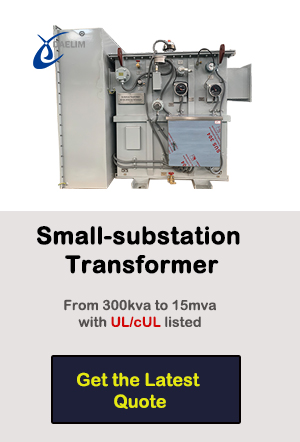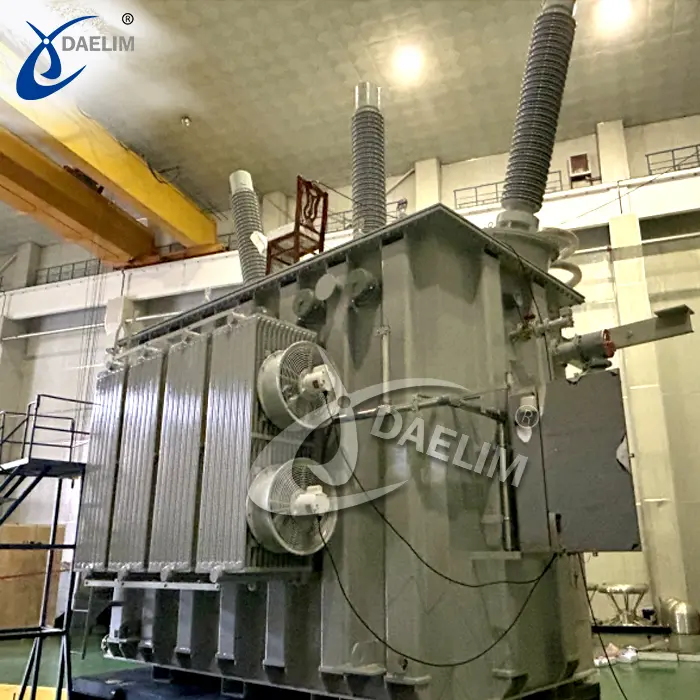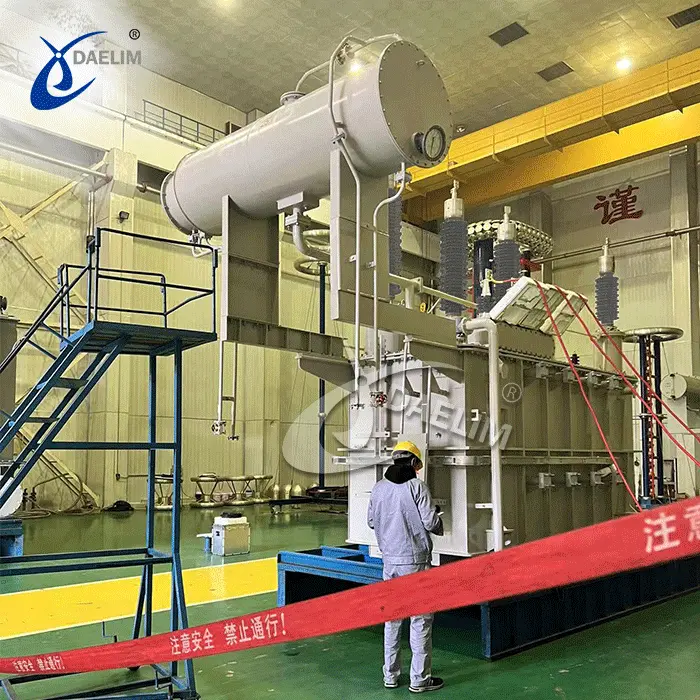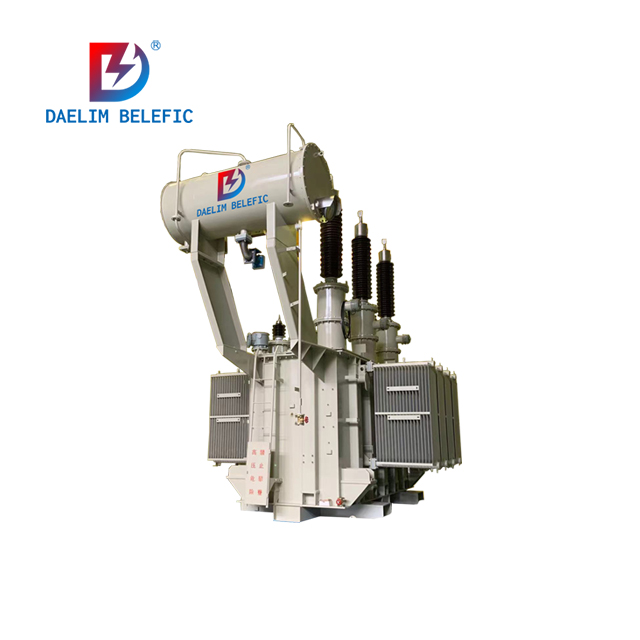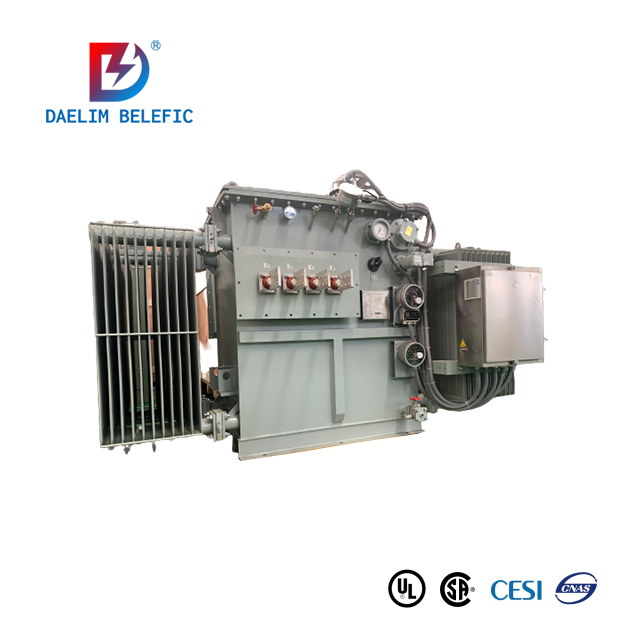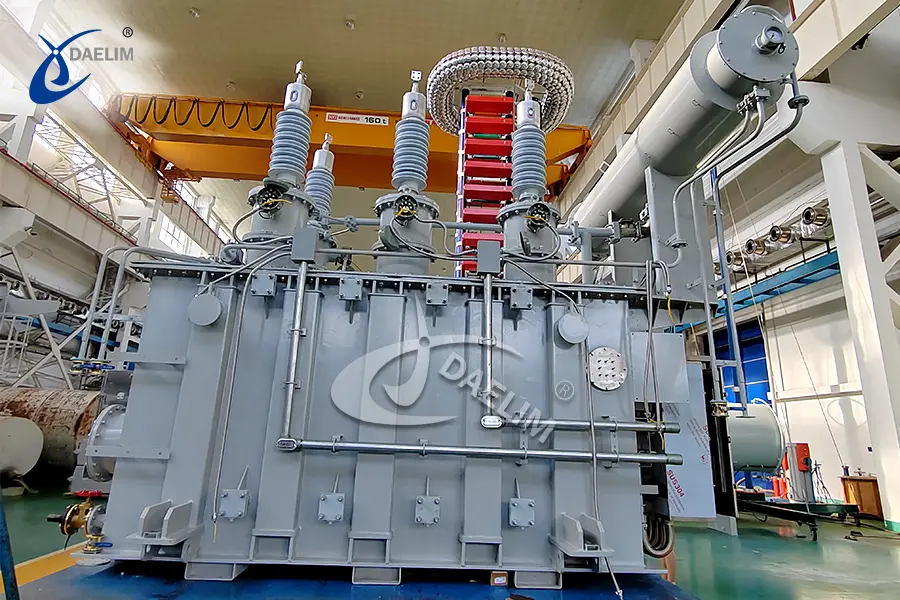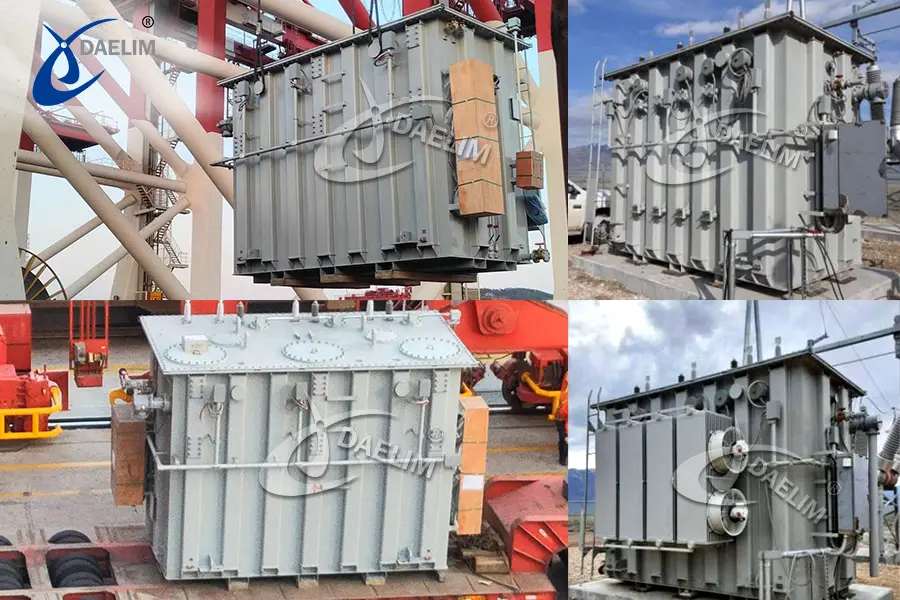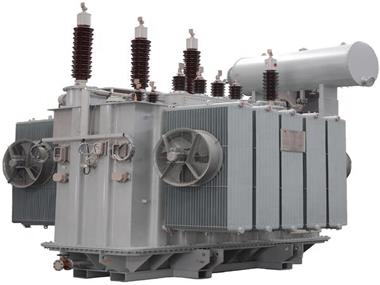The Ultimate FAQs Guide To Types of Substation
There are many different types of substation transformers, each with its unique set of benefits and drawbacks. To make the best decision for your needs, it's important to be familiar with the basics of each type.
At Daelim, we specialize in designing and manufacturing different types of substation transformers. Since substations are one of the priciest types of transformers, it's important to be knowledgeable and aware of all the factors before making a purchase.
In this guide, we'll answer some of the most frequently asked questions about the different types of substation transformers, so you can decide which one is right for your needs.
What is a Substation and Its Types?
A substation is an electrical facility where voltage is transformed from high to low, or the reverse, using transformers. Substations can also change the voltage from alternating current (AC) to direct current (DC) or vice versa.
Substations are a part of an electrical installation that features the terminations of the transmission or switchgear and distribution lines. Substations usually contain one or more transformers and other necessary equipment, such as disconnects, fuses, surge arrestors, and voltage and current regulators.
Different Types of Substations
There are four types of substation transformers, each classified by their respective voltage range:
- Super High Voltage Substations (>500kV)
- High Voltage Substations (66kV, 110kV, 220kV, and 500kV)
- Medium Voltage Substations (6kV, 10kV, 15kV, 22kV, and 35kV)
- Low Voltage Substations (0.2kV and 0.4kV)
- Mobile Substation
- Skid Mounted Portable Substation
- Smart Substation
Super High Voltage Substations (>500kV)
Super high voltage substations are the largest and most expensive type of substation transformer. They are typically used in long-distance power transmission, where extremely high voltages are required to reduce energy loss over long distances.

High Voltage Substations (66kV, 110kV, 220kV, and 500kV)
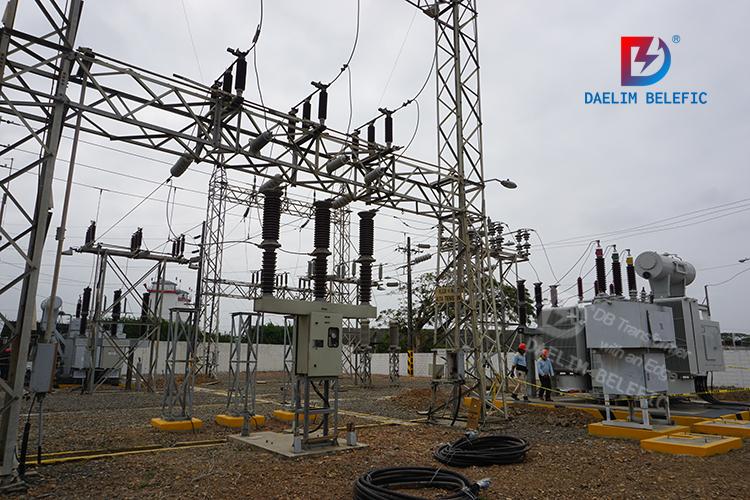
High voltage substations are used in medium-distance power transmission, where voltages are not high enough to warrant the use of a super high voltage substation. This substation transformer is also used to distribute power to large industrial loads.
Learn more: High Voltage Transformer Guide
Medium Voltage Substations (6kV, 10kV, 15kV, 22kV, and 35kV)
Medium voltage substations are used in short-distance power distribution, where voltages are not high enough to warrant a high voltage substation. Medium voltage substations are typically used in urban areas with a high load density.
Read more about 15kV transformer: 5+FAQ About 15kV Transformer
Low Voltage Substations (0.2kV and 0.4kV)
Low voltage substations supply power to small loads such as residential buildings or small businesses. They are typically the least expensive type of substation transformer and can be used in both indoor-type substations and outdoor applications.
Mobile Substation
The mobile substation is to install the device that can be moved to the substation. For example, the substation is installed on the platform of the prying base, the ship deck, and the transportation vehicle. On the basis of the complete substation function, It is reliable and can be able to quickly emergency power supply. It can be applied to temporary power consumption such as substations, engineering construction, electrical equipment failure, and natural disasters. It is a "fire truck" of the power grid system.
Structure composition of mobile substation: high-voltage switch, main transformer, neutral dot device, medium-voltage switch cabinet, station change, cabin, secondary control protection equipment, car body, cable twisted, etc. It can be divided into bicycle loading, two vehicles loading, and three cars.
The picture below is Daelim exported to Ecuador 69 kV 20 MVA Mobile Substation in 2016.
Skid Mounted Portable Substation
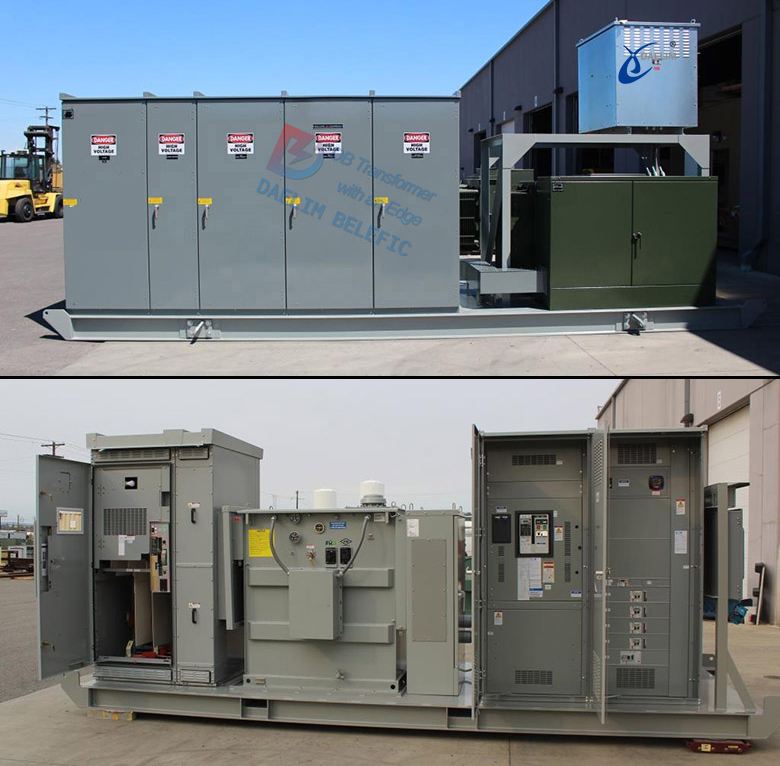
The skid-mounted portable substation is lighter and more flexible than the mobile substation. Daelilm's pad-mounted and small substation transformer can be used in skid mounted portable substations.
The composition of the skid mounted portable substation structure: high-voltage switch, power transformer, neutral dot device, mid-voltage switch cabinet, station change, cabin, secondary control protection equipment, prying base, cable twisted plate, etc.
Read more about substations: What are the types of prefabricated substation?
Smart Substation
The smart substation integrates advanced, low-carbon technology with digital systems to efficiently manage power distribution. It features intelligent high-voltage equipment like transformers and switchgear, connected via fiber optics for real-time monitoring and control. This equipment automates tasks such as data collection, measurement, and fault detection, enhancing reliability and reducing operational costs. A unified information platform ensures seamless communication across all systems, enabling real-time adjustments to grid conditions and proactive maintenance. Overall, smart substations improve power grid efficiency, reliability, and environmental sustainability through innovative technology and integrated management.
How Do Substations Work?
Substations increase the electricity voltage to transport it over long distances with minimal power loss. When the electricity reaches its destination, the substation decreases the voltage so homes and businesses can use it.
The main component of a substation is the transformer, which changes the electricity voltage. The transformer consists of two coils of wire wrapped around a metal core. When electricity flows through the first coil, it creates a magnetic field that induces a current in the second coil. This process increases the voltage of the electricity.
The transformer in a substation is responsible for increasing the electricity voltage, from an average of between 12,0000 to 22,000 volts, up to high transmission voltages of 132,000 to 275,000 volts. It will then step down to 66,000, 33,000, or 11,000 volts. That way, it can enter the distribution network and be used by commercial and residential properties.
Try for free: 10.5MVA-13.8/2.4kV Substation Transformer
How Many Types of Outdoor Substations Are There?
Outdoor substations are mainly classified into two main types: pole-mounted substations and pad-mounted substations.
Pole-Mounted Substation
Pole-mounted substations support the distribution transformers and other equipment on wooden, concrete, or steel poles. These substations are typically used in rural areas where space is not an issue.
Transformers with a capacity of up to 250kVA can be mounted on a single pole, while those with a capacity of 500kVA or more will require two poles. These transformers are the smallest, cheapest, and simplest distribution variants. It is easy to construct but difficult to maintain since all the equipment is exposed to the elements.
Get it now: What You Need To Know About Substation Transformer
Foundation Mounted Substation
All the equipment areas are placed on a concrete foundation in a foundation-mounted substation. These substations are typically used in urban and rural areas where space is not an issue. Foundation-mounted substations are larger and more expensive than pole-mounted substations, but they are easier to maintain because all the equipment is sheltered.
The equipment required for such a type of substation is heavy, so the site selected for this type of substation needs to have a good path for heavy transport. Therefore, foundation-mounted outdoor substations are used when the capacity of the transformer is more than 500kVA.
What is the Purpose of a Substation?
The purpose of a substation is to change the electricity voltage so it can be transported over long distances with minimal power loss. When the electricity reaches its destination, the substation decreases the voltage so homes and businesses can use it.
Substations are an essential part of the electrical grid and play a vital role in ensuring that electricity is delivered to homes and businesses safely and efficiently. Without substations, the electrical grid would not be able to function as there wouldn't be a way to increase or decrease the voltage of electricity.
Investing in the right substation for your needs is essential to ensure that your electrical grid can meet your home's or business's demands. With so many different types of substations available, it's important to partner with a reputable company to help you select the right substation for your needs.
At Daelim, we are well-known for our substation design, engineering, and construction expertise. We have a team of highly-skilled engineers that can help you select the right substation for your needs and budget. Contact us today to learn more about our substation services.
You may enjoy: Power Transformer In Substation
Which Type of Transformer is Used in a Substation?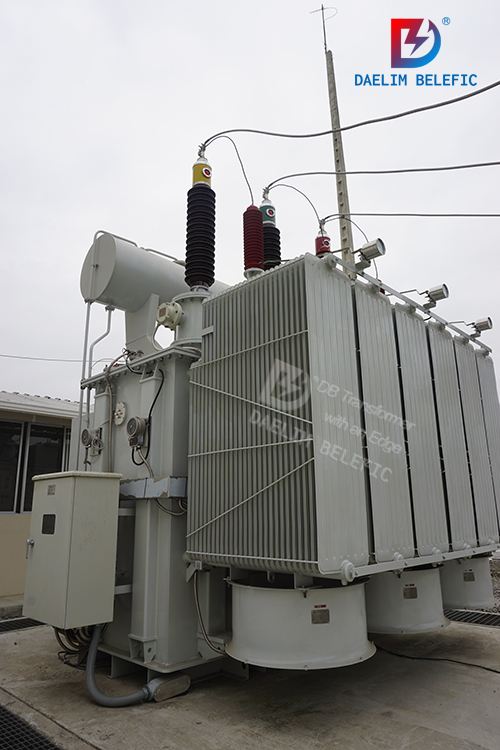
A step-down transformer is the type of transformer used in a substation. This transformer does exactly what a substation is meant to achieve—stepping down or decreasing the voltage of the electricity so smaller commercial or residential applications can use it.
Since a substation naturally has high voltages, the transformer used in a substation must be able to withstand these high voltages. A step-down transformer is designed with this in mind and can withstand the high voltages found in a substation. It will then step down the voltage to a safe level that smaller applications can use.
The typical rating for a step-down transformer used in a substation is 132kV, which has a 132kV primary voltage. This type of transformer is generally paired with transmission-type substations where the voltage needs to be lowered to a lower voltage for use in a smaller area.
Read my article on the Canadian 69 kV Substation Transformer Project
Types of Distribution Substations
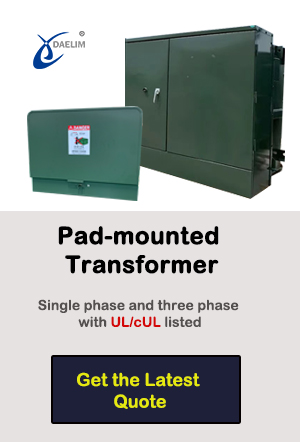 A distribution substation is a type of substation responsible for taking the electricity from the transmission substation and either stepping it up or down to the ideal voltage that can be used for various applications. There are two main distribution substations: step-up and step-down power transformer substations.
A distribution substation is a type of substation responsible for taking the electricity from the transmission substation and either stepping it up or down to the ideal voltage that can be used for various applications. There are two main distribution substations: step-up and step-down power transformer substations.
A step-up substation changes the voltage from a lower level to a higher level. This substation is used when electricity needs to be transported over long distances. For example, it's typically used when you need to increase the voltage from 13,200 volts (13.2kV) to 34,500 volts (34.5kV).
Do you want to learn more about the 34.5 kV transformer?
A step-down substation does the opposite and changes the voltage from a higher to a lower level. This substation is used when the electricity needs to be used by smaller applications, such as homes and businesses. For example, it's typically used to decrease the voltage from 34,500 volts (34.5kV) to 4,160 volts (4.16kV).
Selecting the right type of substation for your needs is essential to ensure that your electrical grid can meet your home's or business's demands. However, choosing the right substation can be a daunting task. Fortunately, you can trust Daelim, a leading transformer manufacturing company with years of experience. Our highly-skilled engineers will work with you to select the right substation for your needs and budget. Contact us today to learn more about our substation services!
What's the Difference Between a Step-up Substation and a Step-down Substation?
The main difference between a step-up and a step-down substation is the direction of the voltage change. A step-up substation increases the voltage, while a step-down substation decreases the voltage.
Another key difference between these two types of substations is their purpose. For example, a step-up substation is typically used when electricity needs to be transported over long distances. In contrast, a step-down substation is mainly used when the electricity needs to be used by smaller applications.
What's the Ideal Voltage for a Substation?
The ideal voltage for a substation depends on its purpose. For example, if the substation is responsible for providing power to homes and businesses, then the ideal voltage would be lower so these smaller applications can use it.
On the other hand, if the substation is responsible for transporting electricity over long distances, then the ideal voltage would be higher to cover these longer distances.
Ultimately, the ideal voltage for a substation depends on its specific purpose. However, most substations are designed to work with either a high or a low voltage, depending on their intended use.
What's the Typical Rating for a Step-down Transformer Used in a Substation?
The typical rating for a step-down transformer used in a substation is 132kV. This type of transformer is generally paired with transmission-type substations where the voltage needs to be lowered to a lower voltage for use in smaller applications.
What's the Difference Between a Transmission Substation and a Distribution Substation?
A transmission substation is a type of substation responsible for stepping up the voltage to an extremely high level so it can be transported over long distances. On the other hand, a distribution substation is responsible for taking the electricity from the transmission substation and either stepping it up or down to the ideal voltage that homes and businesses can use.
Transmission substations generally work with a higher voltage, while distribution substations are designed to work with a lower voltage.
Read on: Different Transformer Types and Their Applications
How Many Amps Can a Single-Phase Transformer Handle?
A single-phase transformer can typically handle up to 175 amps. However, this number can vary depending on the specific model and manufacturer of the transformer.
When selecting a transformer for your substation, it's important to choose one with a rating higher than the amps you expect to use. This will ensure that your transformer can handle the load without overheating or causing damage. Contact us today to learn more about our substation transformers!
Get it now: DOE Efficiency Standards for Transformers
Why Are Transformers so Important To the Electrical Grid?
Transformers are an important part of the electrical grid because they help to regulate and adjust the voltage. They also allow for safe and efficient electricity transmission over long distances. Without transformers, the electrical grid would not be able to function properly because the voltage would be either too high or too low for use.
Different Types of Transmission Substations
Two primary transmission substations are air-insulated substations (AIS) and gas-insulated substations (GIS).
Air-insulated Substations
Air-insulated substations use air as an insulator between the high-voltage equipment and the ground. This substation is typically less expensive to build and maintain than a gas-insulated substation.
Gas-insulated Substations
Gas-insulated substations use gas, such as sulfur hexafluoride (SF6), as an insulator between the high-voltage equipment and the ground. Gas-insulated substations are more expensive to build than air-insulated ones, but they offer several advantages, such as a smaller footprint and less vulnerability to weather conditions.
Substations are an important part of the electrical grid because they help to regulate and adjust the voltage. They also allow for safe and efficient electricity transmission over long distances. Without substations, the electrical grid would not be able to function properly because the voltage would be too high or low for safety use.
Why Substation Transformers Are So Important In Power Systems?
Related Products
Related Article
13.8 kV 10.5 MVA Substation Transformer for Ecuador
A customer from Ecuador contacted Daelim Transformer for a 10.5MVA substation transformer (13.8kV high voltage, 2.4kV low voltage). Daelim Transformer provided a customized solution, conducted virtual factory tours, ensured rigorous quality control via video inspections, and offered post-delivery online training and ongoing support, fostering a successful partnership.
Canadian 69 kV Substation Transformer Project
Today, we are excited to present a case study on a 69 kV substation transformer project by Daelim Transformer. Our Canadian client required a step-down transformer for their substation to connect with the hydroelectric grid in Quebec.
230 kV Three Phase Power Transformer For USA Market
In 2023, Daelim Transformer designed and manufactured a cutting-edge 230 kV three-phase power transformer for a client in Nevada, USA. The client recently shared installation and operational photos, showcasing the successful deployment of this remarkable transformer. Let's delve into the specifics of this transformer project!
What you need to know about Large power Transformers?
This paper introduces the meaning of large power transformers, components, manufacturers, cooling methods, inspection, and maintenance of basic knowledge.
Overview of Oil-Immersed Distribution Transformers
This article mainly describes the oil-immersed distribution transformer, including the oil transformer application, characteristics, types, and other issues of the transformer.
What You Need To Know About Substation Transformer?
This article discusses power substations and their key components, focusing on the role, types, purchasing considerations of substation transformers, as well as the importance of safety and testing certification.


